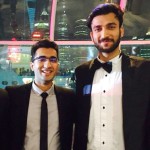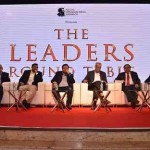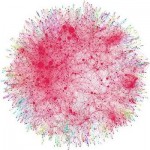Leading HR Execs Discusses How Big Data Can Help You Hire Smarter

Is it possible to predict if your team’s best performer is going to leave you in six months?
Or if that unassuming interview candidate is going to be your “rockstar” trader within the year?
In a few companies in Asia, you can. Welcome to the world of people analytics.
I had the privilege of speaking with Ms. Cynthia Tan, who during her time as Group Head of Human Resources (HR) led the creation of the people analytics function at the Oversea-Chinese Banking Corporation Limited (OCBC) in Singapore. She started the initiative three years ago when this was very much still a novel concept, especially in Asia Pacific where this phenomenon was just beginning to be studied.
Tan defines people analytics as the “use of data and analytical methods to provide insights for more evidence-based decisions about people, relationships, processes and their impact on an organization.”
That task is a daunting one for most HR departments: only 14% of companies globally have done any “statistical analysis” of employee data, with a mere 4% that have achieved the capabilities to perform “predictive analytics” on their workforce.
Cynthia shared what it took to build this within an Asian bank with almost 30,000 employees across the globe.
Skills Gap Within HR
A major challenge initially was overcoming the lack of analytical skills within HR. This is consistent with the findings of a joint Harvard Business Review and Visier study, which found this to be among the top two barriers in the adoption of people analytics within companies.
“As far back as early 2013, we certified a large number of HR people in analytics. Despite the knowledge acquired, putting it into practice was a different ball game altogether. Statistics and mathematics are not natural to [most HR professionals].”
“Build” or “Buy”? Apply a Short-Term Bridge
Before starting a people analytics function, it can be difficult to wait months, maybe years to build expertise from within. As a result, it may be tempting to “buy” expertise by hiring consultants.
To tackle this challenge, Cynthia decided to tap data science expertise outside HR, but within the customer analytics group of the bank. The solution seemed to strike a happy medium.
“This partnership was ideal at the startup stage. HR provided the content and context for the [customer analytics] team. The coaching and mentoring from the analytics team was invaluable in analytics workflow and modeling process.”
Key takeaway 1: This approach allows HR teams to kickstart a journey into building analytical capability. By introducing expertise from the outside, quick wins in people analytics can be achieved to raise interest across the rest of the company. This also buys time for the HR team to grow in their ability to execute analytical projects.
Start Where The Talent War Is Fiercest
Cynthia believes that the time is ripe for people analytics to become more mainstream. “Organizations across Asia are attempting to build [this] capability…Younger people with science and engineering [educational] backgrounds are also more open to joining the HR workforce.”
Particularly, “analytics for HR is more widely used in sectors with intense competition for talent that face challenges like attrition and succession planning, like banking, government and healthcare. These are the sectors that have invested in HR technology and as a result they have rich and quite complete data sets which are critical for building an analytics function.”
For example, as the banking industry in Singapore became more open to foreign competition over the past decade, local banks have had to work harder to attract and retain talent. Adopting more sophisticated analytical tools to inform OCBC’s people strategy was a matter of survival.
Key Takeaway 2: Asian companies in industries with the fiercest competition for talent should start investing in people analytics. The earlier they do, the more useful data they collect, and the more precise their analysis can be. This ultimately allows them to use that analysis to better retain and develop the talent they have.
Developing a New Generation of HR Number-Crunchers
In Asia, “tertiary institutions are beginning to include analytics into the curriculum of various disciplines”, but demand continues to outstrip supply for such skills. Cynthia observes that the HR fraternity has not yet fully embraced analytics as a core component of professional education, but believes it is not long before it does.
This is in contrast to the past, where she recalls that “people used to tease [us]…[saying that the] HR department is where numbers go to be forgotten.”
While the ability to translate number-crunching insights into realistic HR programmes and policies remain rare, the availability of broader analytical skills is a positive development. Now, HR chiefs can decide whether to “educate HR to perform the analyst role or hire an analyst who understands HR”.
Key takeaway 3: As the maturity of people analytics as a legitimate business function grows, the role of the HR department will also change. The use of data and analytics will increasingly complement the traditional role of the department. It would become more commonplace to see data scientists specializing in HR, and business leaders would be more accustomed to making people decisions with the aid of analytical models.
While she is retired, Cynthia continues to be passionate about driving the profession forward. She is optimistic that as HR analytics evolves, it would transcend descriptive analytics into the realms of the predictive and prescriptive.
Source: Forbes

Kalyan Banga226 Posts
I am Kalyan Banga, a Post Graduate in Business Analytics from Indian Institute of Management (IIM) Calcutta, a premier management institute, ranked best B-School in Asia in FT Masters management global rankings. I have spent 14 years in field of Research & Analytics.












0 Comments